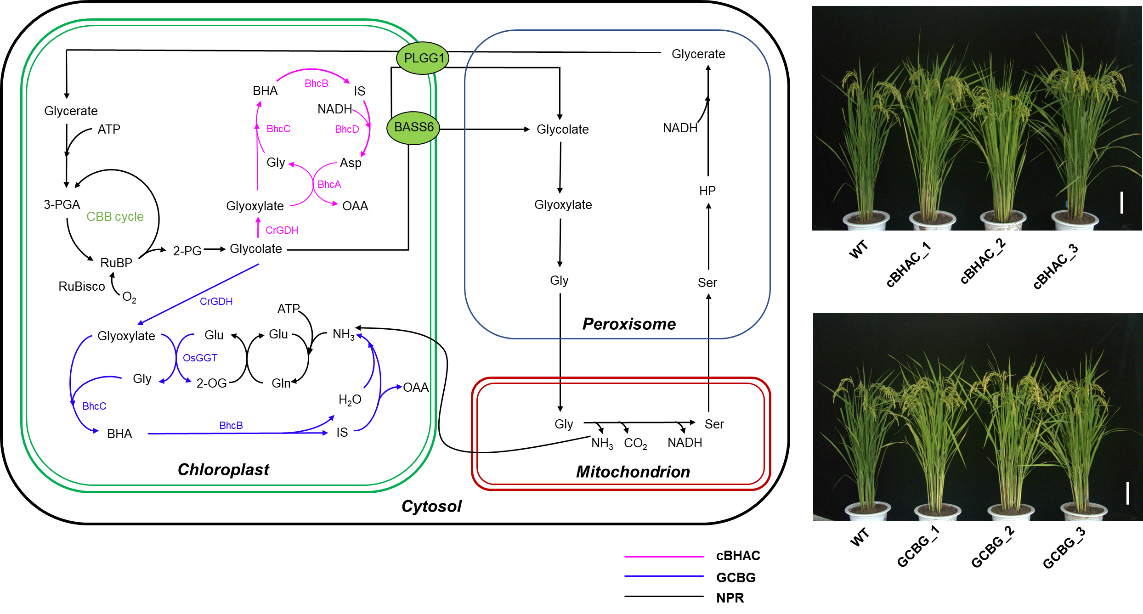The Crop High-Efficiency Photosynthesis Functional Genomics Innovation Team at the Biotechnology Research Institute (BRI), Chinese Academy of Agricultural Sciences (CAAS), has achieved a major advance in photosynthetic synthetic biology by engineering two innovative carbon–nitrogen coupled photorespiratory bypasses in rice. These synthetic pathways improve the efficiency of both energy and carbon–nitrogen utilization during photorespiration, paving the way for the development of high-yield, resource-efficient rice varieties. The study was published in The Plant Cell.
C4 crops possess a CO₂-concentrating mechanism and almost no photorespiration, whereas C3 crops such as rice can lose up to 30% of fixed carbon through this process, leading to lower photosynthetic efficiency and yield. Reducing photorespiration in C3 crops without disrupting carbon–nitrogen balance has long been a major challenge for plant scientists.
Using a top-down rational design strategy, the research team synthesized two novel carbon–nitrogen coupled photorespiratory bypasses in rice chloroplasts. These pathways enable the metabolism of glycolate into oxaloacetate without releasing CO2, effectively coupling carbon and nitrogen assimilation. Physiological and biochemical analyses revealed that the introduction of these bypasses enhanced amino acid, sugar, and energy synthesis, while significantly improving photosynthetic efficiency and nitrogen use efficiency.
Field trials showed that transgenic rice plants harboring the carbon–nitrogen coupled bypasses achieved a 19.0% yield increase under normal nitrogen conditions and up to a 44.1% increase under low-nitrogen conditions compared with wild-type plants. This research not only uncovers new mechanisms by which photorespiratory pathways regulate carbon–nitrogen metabolism but also provides a scientific foundation for breeding high-yield, fertilizer-efficient, and climate-resilient rice varieties.
The study was supported by the National Key Research and Development Program of China (2020YFA0907600; 2022YFF1001700) and CAAS Innovation Project.
Original article: https://doi.org/10.1093/plcell/koaf015

Figure: Engineering of the GCBG Photorespiration Bypass Coupling Carbon and Nitrogen Metabolism |